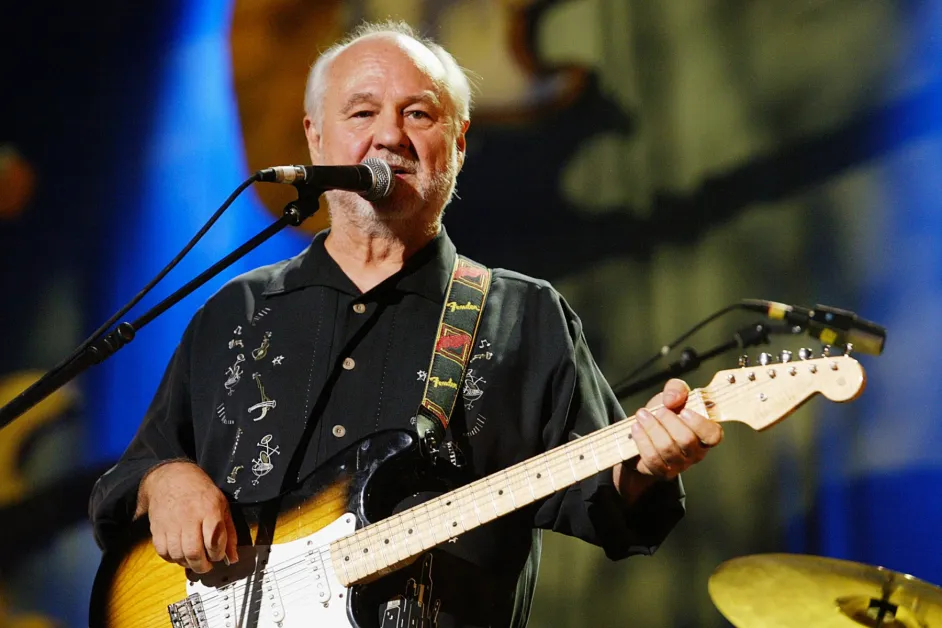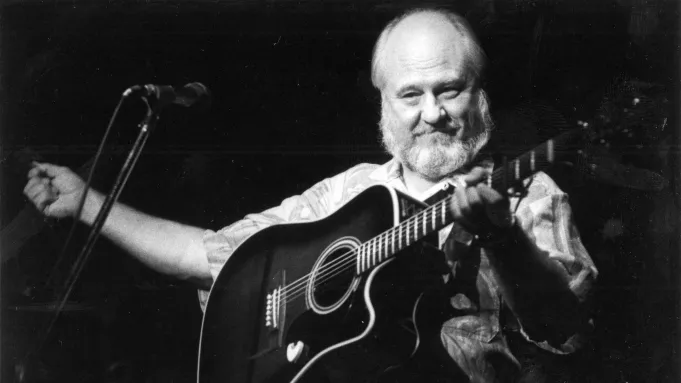
Sonny Curtis: A Life in Song
Early Years
Sonny Curtis was born on May 9, 1937, in the small farming community of Meadow, Texas. He grew up in a large family, the son of cotton farmers who knew the value of hard work. Music, though, was his first love. Even as a small child he gravitated toward the guitar, picking up songs by ear and learning from relatives who played traditional country and bluegrass. By the time he was in grade school he could already play competently, and music quickly became both an escape from the demands of farm life and a passion that would shape his future.
The Curtis household was filled with both hardship and creativity. Cotton farming was grueling, unpredictable work, and Sonny often recalled the long days in the fields. Yet it was in those West Texas plains, with their wide horizons and stark beauty, that his musical imagination was formed. The region around Lubbock was surprisingly fertile ground for new sounds in the 1940s and 1950s. Country, gospel, swing, and rhythm & blues filtered across the airwaves, and young musicians like Curtis absorbed them all.
In his teens, Sonny Curtis became close friends with another Lubbock boy who shared his love of music: Buddy Holly. The two often played together, jamming in garages and appearing in small local gigs. Their connection was not just social but deeply musical. Each inspired the other, and they both sensed the rising tide of something new—what would soon be called rock and roll.
Buddy Holly and the Early Years of Rock
Sonny Curtis’s first brush with the recording industry came when he was still very young. In the mid-1950s, he played guitar on several early Buddy Holly sessions. Songs such as “Blue Days, Black Nights” and “Rock Around with Ollie Vee” featured Curtis’s guitar, and though they were not smash hits, they were important steps in Holly’s development.
During these years Curtis also had a chance to see the revolution of rock and roll up close. In 1955 he and Holly opened shows for Elvis Presley, who was then just beginning to break nationally. For Curtis, it was a revelation: Presley’s charisma and energy showed what music could do when it jumped beyond country into a new electrified style. Those performances made a lasting impression and confirmed Curtis’s determination to pursue music seriously.
Curtis did not join the Crickets immediately when Buddy Holly formed the band in 1957, but he remained close to the group. He continued to hone his guitar playing and songwriting skills, moving easily between rock, country, and pop styles.
After the Crash: The Crickets Without Holly
Everything changed on February 3, 1959, when Buddy Holly, along with Ritchie Valens and the Big Bopper, was killed in a plane crash in Iowa. The tragedy stunned the music world and left the Crickets without their leader. For Curtis, who had been so close to Holly, the loss was both personal and professional.
Not long afterward, Sonny Curtis joined the Crickets officially. He brought with him not only his guitar but also his songwriting talent, which soon proved indispensable. The band recorded the album In Style with the Crickets, which included several Curtis originals. Among them were “More Than I Can Say” and “I Fought the Law,” songs that would later achieve fame far beyond their initial release.
At nearly the same time, Curtis was drafted into the U.S. Army. Even in uniform, however, he continued to write songs. During basic training he penned “Walk Right Back,” a tune that he later sent to the Everly Brothers. They recorded it, and it became a major hit. That kind of determination—writing songs under any circumstances—was typical of Curtis. He was a craftsman, always working, always shaping melodies and words.
Signature Songs
Sonny Curtis’s songwriting catalog eventually ran into the hundreds, but a handful of titles stand out as defining his career.
“Walk Right Back”
Written in the Army, this song became one of the Everly Brothers’ signature hits. Its plaintive melody and simple, heartfelt lyrics captured the emotional directness that Curtis excelled at.
“More Than I Can Say”
First recorded by the Crickets, it later became a hit for Bobby Vee in the 1960s and was revived by Leo Sayer in 1980, proving its durability across decades.
“I Fought the Law”
Arguably Curtis’s most famous song, “I Fought the Law” became a rock standard. First recorded by the Crickets, it was made famous by the Bobby Fuller Four in 1966 and later covered by countless artists, from the Clash to Green Day. Its rebellious spirit and sharp refrain made it an anthem for generations.
“Love Is All Around”
In 1970 Curtis wrote and performed this song as the theme for The Mary Tyler Moore Show. Its upbeat optimism—“You’re gonna make it after all”—became inseparable from the show’s image of female independence and possibility. Unlike his rock and country hits, this was a television theme, yet it remains one of the most enduring pieces of his career.
Other Works
Curtis also wrote “The Straight Life,” recorded by Bobby Goldsboro; “A Fool Never Learns,” sung by Andy Williams; and contributed to country hits like “I’m No Stranger to the Rain.” His versatility was remarkable, moving from rock to pop to country without losing his personal voice.
A Solo Career and Beyond
Though always associated with the Crickets, Sonny Curtis also pursued a solo career. He released albums such as The First of Sonny Curtis, The Sonny Curtis Style, Love Is All Around, and Rollin’. While these records never turned him into a household name, they showcased his talents as both a singer and songwriter.
During the 1960s and 1970s, Curtis also found steady work writing jingles for commercials, a field where his knack for catchy hooks served him well. At the same time, he continued to provide songs for other performers. His move to Los Angeles expanded his connections, and later, relocating to Nashville put him at the heart of the country music industry.
As a performer, Curtis remained active for decades, touring both on his own and with the Crickets. He was a respected musician in Nashville circles, admired for his consistency and professionalism.
Honors and Recognition
Sonny Curtis’s contributions did not go unnoticed. Over the years he received numerous honors:
- In 1991 he was inducted into the Nashville Songwriters Hall of Fame, a recognition of his enduring success as a writer.
- With the Crickets, he was inducted into the Musicians Hall of Fame and Museum.
- In 2012 the Rock & Roll Hall of Fame honored the Crickets, placing Curtis alongside Jerry Allison, Joe B. Mauldin, and Niki Sullivan as pioneers of rock.
Beyond awards, his songs themselves serve as his legacy. When a song like “I Fought the Law” is played by artists decades apart, or when “Love Is All Around” remains recognizable to generations who may never have known its author, it testifies to the lasting power of his craft.
Personal Life
Sonny Curtis married his wife, Louise, and they shared more than fifty years together. The couple had a daughter named Sarah. Despite the demands of the music business, Curtis valued his family life deeply and often spoke of the grounding they provided him.
Unlike some contemporaries, he avoided the trappings of scandal or excess. Friends and colleagues described him as modest and good-natured, more interested in writing songs than chasing fame. His humility was perhaps one reason his name was not as widely known as his songs.
Later Years
Even into his later years, Curtis remained musically active. He performed at tribute shows, festivals, and songwriter rounds, delighting audiences with stories of Buddy Holly, the Crickets, and his long journey through music. His voice aged gracefully, and his guitar playing retained its warmth.

.
Curtis lived in Nashville in his final decades, where he was respected as an elder statesman of both rock and country. Younger musicians sought him out, not only to perform his songs but to hear his stories and advice.
On September 19, 2025, Sonny Curtis died at the age of 88 after a short illness.
Legacy
Sonny Curtis’s story is one of quiet but profound impact. Unlike Buddy Holly, he was not the face on the marquee, and unlike Elvis, he did not command screaming crowds. Instead, his power lay in the songs themselves. They had a way of reaching across boundaries of genre and generation.
Few songwriters can claim a catalog that includes rock anthems, television themes, and country hits. Fewer still can boast songs that remain alive fifty years after they were written. Curtis achieved this with a craftsman’s approach, never flashy, always genuine.
“I Fought the Law” alone would have cemented his reputation. Add “Walk Right Back,” “More Than I Can Say,” and “Love Is All Around,” and the picture becomes even clearer: Sonny Curtis was one of the most versatile and enduring American songwriters of the twentieth century.
His career also illustrates the resilience of musicians who lived through the seismic shifts of popular music. From the early days of rockabilly to the age of television and beyond, Curtis adapted without losing his core identity. He carried the spirit of Buddy Holly and the Crickets forward, yet also carved his own path.
For fans and fellow musicians alike, Sonny Curtis embodied the idea that you don’t need to be the loudest voice in the room to make a lasting mark. Sometimes it is the songwriter, quietly shaping melodies and lyrics, who leaves the deepest impression.
Conclusion
Sonny Curtis’s life spanned nearly nine decades and touched nearly every corner of American popular music. Born in the cotton fields of Texas, he rose to become a songwriter whose work resonated across continents and decades. His friendships with Buddy Holly and the Crickets placed him at the heart of rock’s beginning, while his songs traveled far beyond that moment, finding new life with each generation.
He was, above all, a man devoted to the song: to the craft of melody, lyric, and rhythm. In this devotion, he left behind not only a catalog of classics but also an example of quiet dedication and creativity.
Sonny Curtis may have died on September 19, 2025, but his music will continue to be sung, played, and remembered for as long as people pick up guitars and search for words to match their hearts.
Check out Sonny Curtis on Amazon by clicking here.
If you found this interesting please share it with your friends and family, and check out some of our other articles on Musicians who Died in 2025.
.

